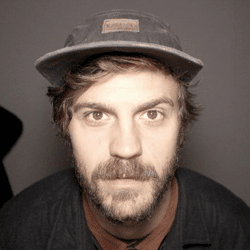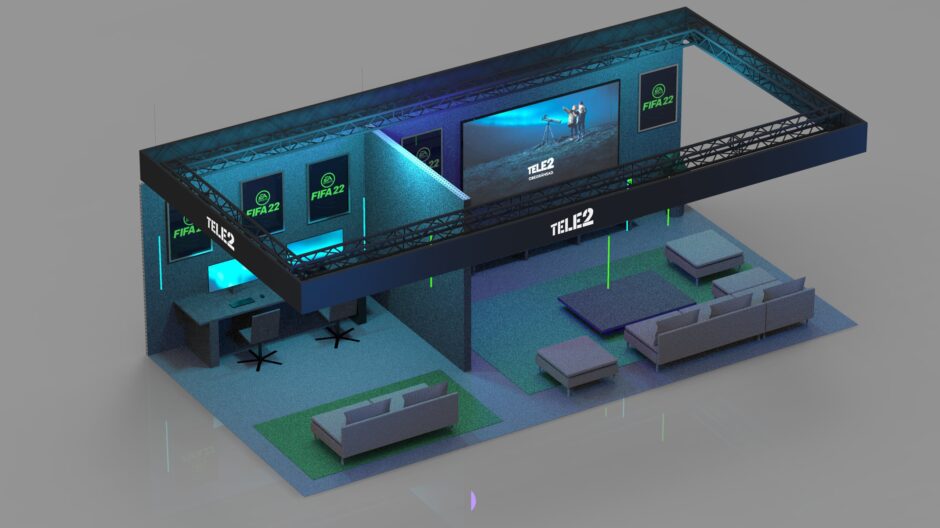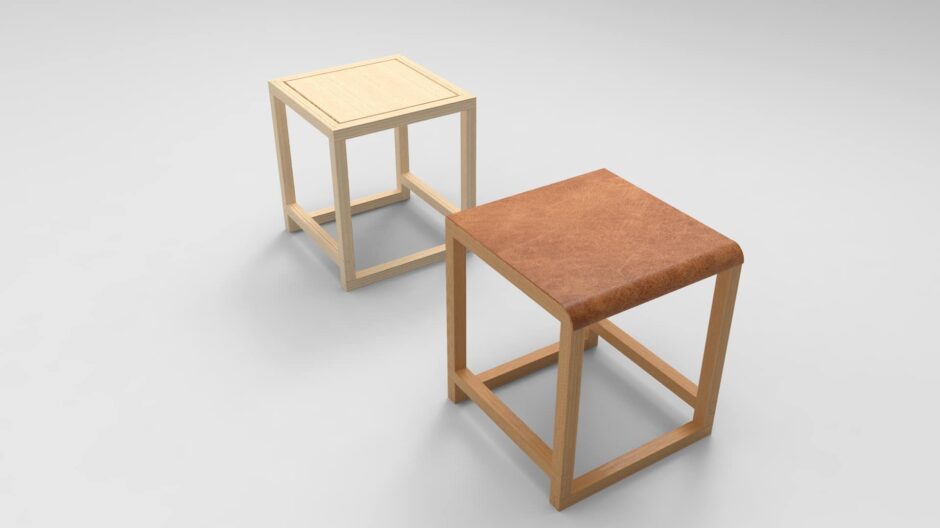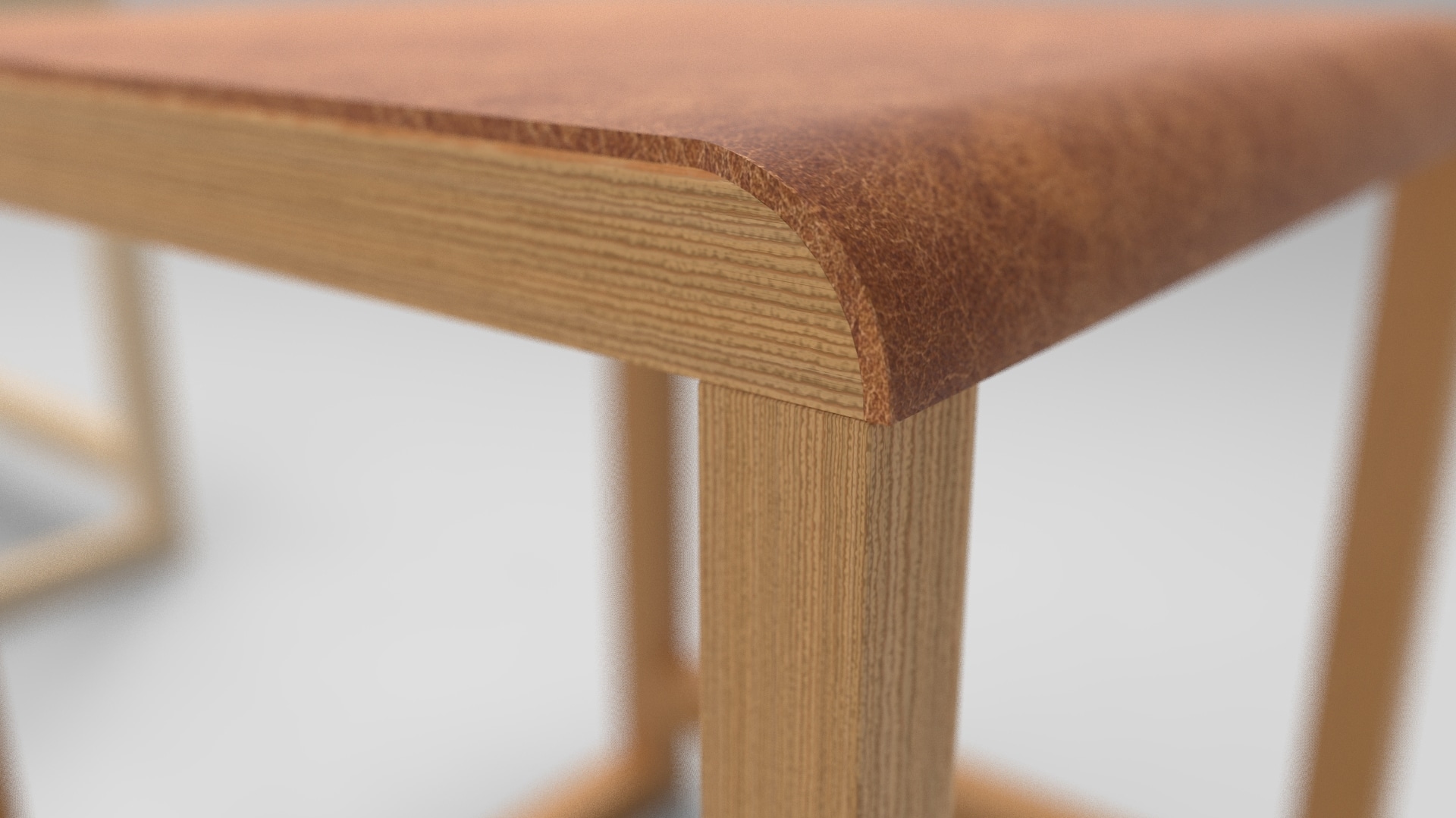Brandworks is a comprehensive supplier of the entire process from idea and design to manufacturing and assembly of fair-trade stands, pop-up shops, and brand-building interior design. They have delivered solutions for brands such as Saab, Spotify, Scania, H&M, Monki and Sonex.
Creative Tools, a KeyShot Gold Reseller based in Sweden, supplies software licenses for the 3D design software Rhino and the rendering tool KeyShot to Brandworks. They had a chat with Brandworks’ Project Manager Wilhelm Broman to find out how the company uses KeyShot in its workflow.

Website | Instagram
Modeling software used: Rhino
Can you tell us a bit about yourself and Brandworks?

As one of the founders, I have been with the company since the very beginning, back in 2013. When we started we were a group of builders who assembled fair trade stands.
One of my colleagues and I are naturally curious, inquisitive people, and we wanted to evolve the company further. We got down to business and started learning how to draw in 3D quite quickly. We started sketching and designing trade fair stands in 3D, and developed that type of product offering for Brandworks.
Since then, the company has evolved into a comprehensive supplier offering the whole chain from idea to design, to visualization, to manufacturing and assembly of stands, showrooms, pop-up shops, shop interiors, etc.
The company started with us three brothers in 2013, and now we have a team of 30 employees. We have one group that is responsible for assembling trade fair stands, ten employees work production, five of us who draw in 3D and construct and design.

What sparked your interest in 3D, visualization and design?
I’ve always been a creative person. I haven’t studied at university, so I am self-taught with a passion for design, production, furniture making and interior architecture. In the beginning, we fed our CNC machines with DFX lines using Adobe Illustrator. But that resulted in a lot of mistakes, so we thought it was better to design in 3D directly. That was probably the biggest reason I wanted to learn 3D.

What’s unique about the approach that Brandworks takes to a project?
It’s our closeness to production. That’s very unique about Brandworks. Right now, as we speak, I’m just a few steps away from the carpentry shop, and I’m sitting on the floor above the metal shop.
Because we provide the whole chain in-house, from design to manufacturing to installation, we have the possibility to create renderings that will actually match the end result of our products. That’s definitely one of our strengths. Many designers who don’t have the full manufacturing chain in-house may design something they think will look good. But without a full understanding of the manufacturing process, it can be very difficult to render a realistic photo of your design.
We are also very curious, and we’re not afraid to try new approaches and manufacturing methods. We try to stay at the forefront. At the moment we are looking a lot at recycled plastic parts and 3D printing. We 3D print smaller parts for products, such as small hats, screws and lamps.

What is your primary 3D modeling software?
I use Rhino. I chose it because I had colleagues and partners who were skilled in it. It’s a very easy and intuitive 3D software to draw 3D models in, and a very powerful tool for us to draw explanatory sketches of our design.
How and where in the process is KeyShot used?
We mainly use KeyShot to help sell our designs. It’s a quick and easy software to accurately visualize and explain to our customers what our products will look like in the end. It’s easy to position lights and get really good-looking renderings.
KeyShot helps communicate ideas to avoid misunderstandings between ourselves and the clients. In the past, when we didn’t have a good rendering tool and instead used Adobe Illustrator and drew up flat surfaces, it was very difficult to communicate our ideas accurately.
KeyShot is a very good tool for adding lights, surfaces and textures and for quickly adding logos and all those sorts of things. It also helps us give a very clear image of our final products.
Can you tell us about your workflow in a project?
First, we draw a 3D model of our product in Rhino. Instead of modeling the whole environment, we just block out the environment our final product will be in. Then we prioritize our time and effort on the product we are going to sell.
Sometimes we have time to spend a whole day perfecting the lighting and setup in KeyShot, and sometimes we have almost no time at all. KeyShot makes it insanely fast to produce an image that is very effective for the client. That’s what’s so phenomenal about KeyShot!
Once the product is 3D modeled in Rhino, visualized in KeyShot and the client has approved the design, we send the design to our manufacturing team. They build up the product and the end result looks the same as the image from KeyShot.
What advice would you give to other companies interested in getting started with KeyShot?
It’s a crazy easy-to-use and a very time-efficient rendering tool. It’s basically self-explanatory. Despite the ease of use, you can still go deeper and dig into more advanced features and options.
Obviously, the more time you spend with it, the better you will become. But even from the start, you can achieve some very nice results.



